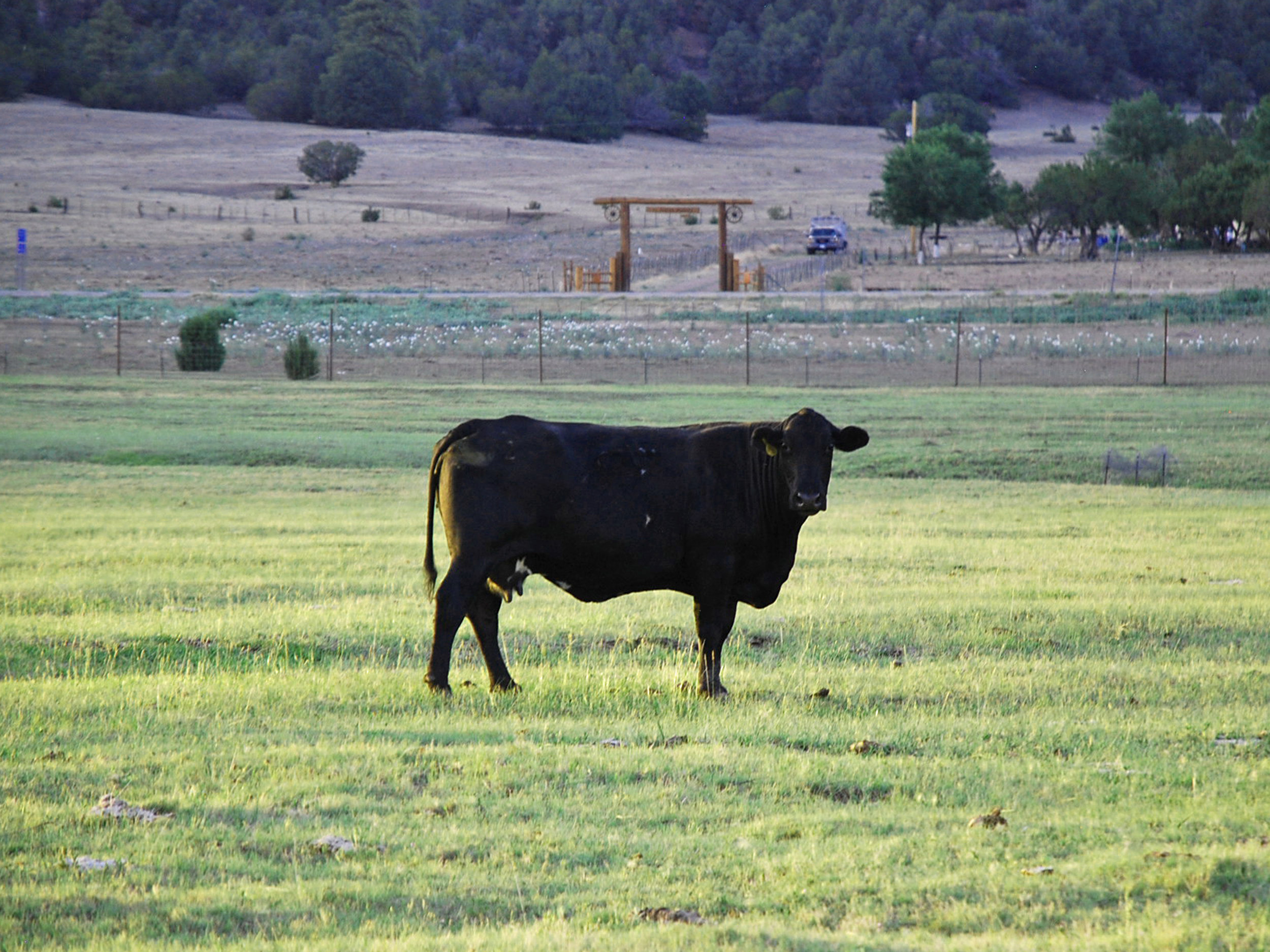Grain-Free-Beef
A little education: Why Grain-free, Pastured Beef?
The typical animal in the American food system is raised in a “Confined (or Concentrated) Animal Feeding Operation” (commonly abbreviated as CAFO). Feedlot beef, raised this way, get minimal exercise and are fed a diet specifically formulated with the cheapest ingredients to insure they gain the most fat in the shortest time possible.
Unfortunately, this also means they get sick.
Cattle in CAFOs are commonly fed animal protein and grain to increase their weight. These cattle should be eating vegetation and can only handle minimal amounts of animal protein and grain in their diet. This diet will result in the cattle getting sick and with that increasing risk to you. High grain diets change the pH of the cow’s rumen allowing pathogenic (disease causing) E-coli to grow, potentially exposing anyone who consumes products from that animal to the bacteria.
These practices don’t consider the animals’ natural behaviors or long term health. The conditions are often cramped, filthy, and sometimes dark. When you eat CAFO beef, chicken, and pork you’re eating misery. “Chew on that” you might say.
How does the USDA define it?
Organic – Organic animals may be fed or supplemented with organic grain. There are no specifications on living conditions. They could be in a feedlot just like any other CAFO.
Grass-Fed – Grass-fed animals receive a majority of their nutrients from grass throughout their life, and by definition up to 30% of their diet may be grain. There has been no restriction of antibiotic, hormone, or pesticide use. There are no specifications on living conditions. (USDA retired their regulatory grass-fed label in 2016. There are other independent labels for grass-fed. )
Pasture-Raised – The USDA has not developed a federal definition for pasture-raised products. “Pastured” is a term as unregulated in the food industry as the term “natural”.
If that list of definitions doesn’t have you scratching your head you should probably read it again. Please ask your farmer and butchers exactly how the animals were raised and fed. (Don’t depend on a label, it may not mean what you think it does or think it should.)
Our Grain-Free, Free Range, Pastured animals live and eat very differently! 😊
Considering that all beef are biologically intended to be herbivores, eating vegetation, we decided our cattle should live on open range/pasture grasses. To insure optimal health, we have minerals available for our cattle to consume as they choose.
How does this affect the meat?
Pastured and grass-fed (grain-free) cattle, in the true sense of the word, are moving around a whole lot more. Used muscle is tougher than unused muscle, that’s why veal (confined baby cow) is more tender than an old milk cow. Muscle that’s used more is also darker because mitochondria, the energy producing organelle in a cell, multiply in harder working muscle.
CAFO animals are fed diets high in carbohydrates that put fat on the animal more quickly. A cow eating grass takes much longer to put on fat. All animals put on fat in a specific order. It’s first laid down around the organs, next under the skin, and lastly in the muscle.
Grass-finished meat contains less Marbling, the fat in the muscle. While it makes meat tender, grass-fed and pastured animals aren’t getting the grain rich, carbohydrate loaded, high calorie diets and will not develop as much marbling.
When a farmer raises grass-fed and pastured cattle with sincere intentions of providing them with a biologically appropriate life, they live very differently than they would in a CAFO. The animals have space to express their natural instincts to graze, roam, and interact as a herd.





